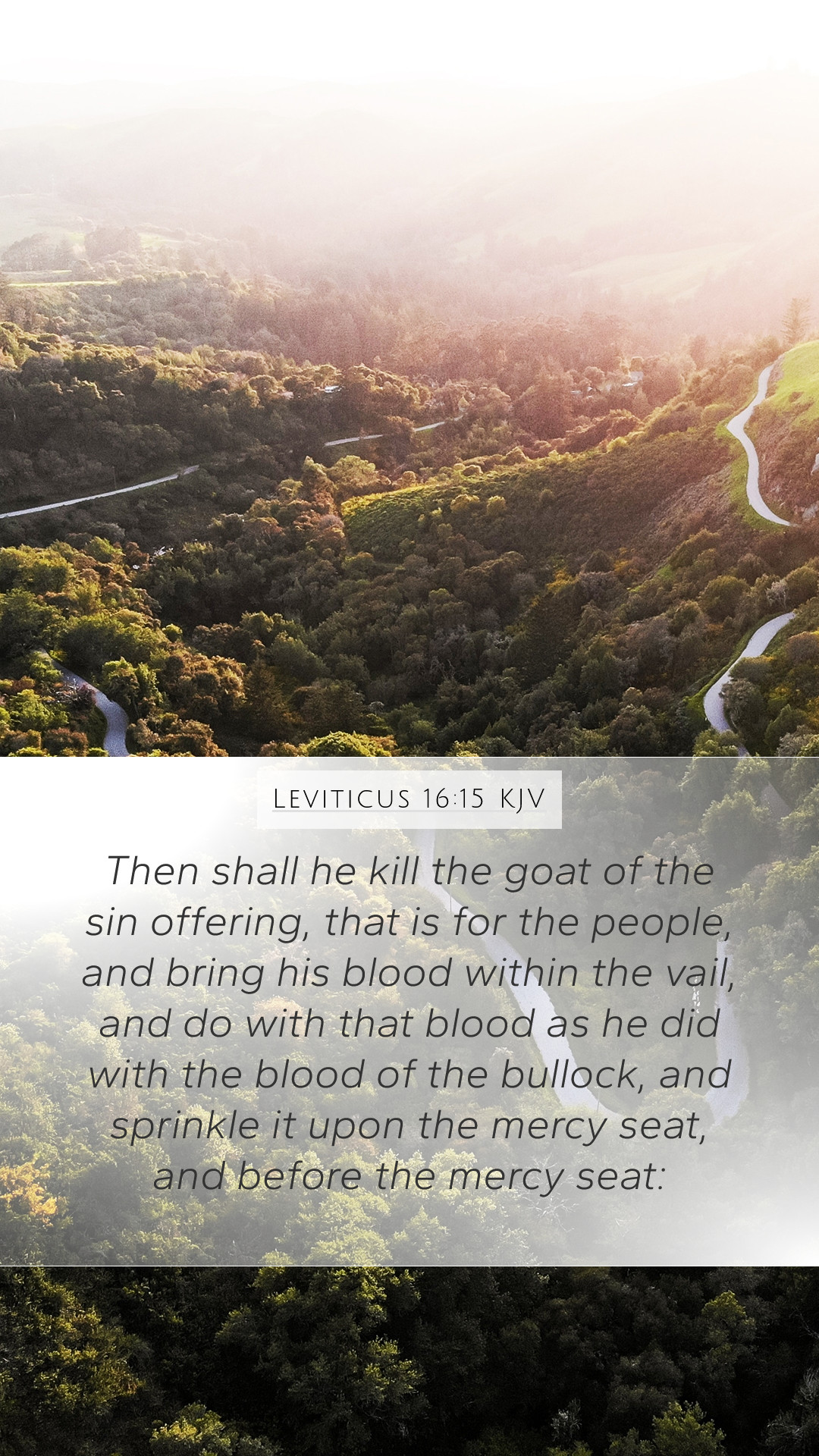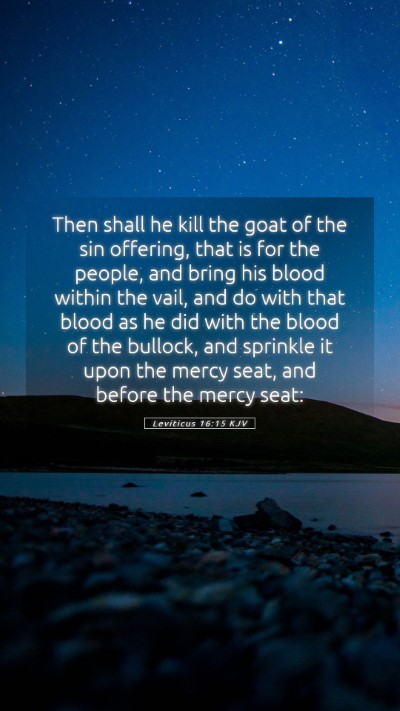Understanding Leviticus 16:15
This passage from Leviticus is critical in understanding the ritual of atonement and the sacrificial system established by God for the Israelites. It reveals profound insights into themes of sin, sacrifice, and God's provision for forgiveness.
Bible Verse Context
The context of Leviticus 16:15 centers around the Day of Atonement, a significant event in the Jewish calendar where high priests made atonement for the sins of the people. This chapter outlines the procedures and rituals that must be followed to attain forgiveness and purification.
Verse Explanation
Leviticus 16:15 states:
“Then shall he kill the goat of the sin offering, that is for the people, and bring his blood within the veil, and do with that blood as he did with the blood of the bullock, and sprinkle it upon the mercy seat, and before the mercy seat.”
Key Themes
- Sin Offering: The goat represents a sin offering that acknowledges the collective sins of the people.
- Blood Atonement: The use of blood signifies life and serves as a means of atonement, illustrating the seriousness of sin.
- Mediator Role: The high priest acts as a mediator between God and the people, emphasizing the need for a representative to approach God.
Bible Verse Meanings
According to Matthew Henry, the act of sacrificing the goat is a crucial aspect of acknowledging sin before God. It exemplifies the depth of repentance required and the necessity of blood sacrifices under the Old Covenant.
Albert Barnes illustrates that this ritual not only calls for the physical act of sacrifice but spiritually signifies the cleansing from sin through God's prescribed means. The blood being sprinkled on the mercy seat further highlights God's holiness and the need for a proper approach to Him.
Adam Clarke explains that the practice serves as a metaphor for the ultimate sacrifice of Jesus Christ, where His blood was shed for the atonement of humankind's sins, providing a perfect fulfillment of the Old Testament sacrificial system.
Biblical Significance
The ritual in Leviticus 16:15 underscores the foundational understanding of sin and atonement in Scripture. It serves as a precursor to the New Testament's teachings on sacrifice, culminating in the person of Jesus Christ.
Cross References
- Hebrews 9:7 - Discusses the high priest entering the holy place once a year with blood for atonement.
- 1 Peter 1:18-19 - Describes the precious blood of Christ as a Lamb without blemish.
- Isaiah 53:5 - Foretells the suffering servant who bears our iniquities.
- Romans 3:25 - Explains that God presented Christ as a sacrifice of atonement through the shedding of His blood.
- Colossians 1:20 - Teaches that through Christ's blood, God reconciled all things to Himself.
Applications for Daily Life
Engaging with the principles found in Leviticus 16:15 can lead to a richer understanding of God's holiness and the significance of repentance. The emphasis on blood as a symbol of atonement encourages believers to reflect on the value of Christ's sacrifice in their lives.
As part of your Bible study lessons, consider how the themes of atonement and sacrifice relate to personal spiritual practices, and how the understanding of sin informs ethical living and decision-making.
Conclusion
Leviticus 16:15 profoundly informs our Bible study insights regarding sin and redemption. The historical context enriches the surrounding narrative and enhances our understanding of what it means to be in relationship with a holy God through Christ. Use this knowledge in your online Bible study, in Bible study groups, and while exploring additional Bible study resources to deepen your understanding of Scripture.
Further Study
To gain more insights into the significance of Old Testament sacrifices and their relevance, explore topics such as:
- Historical context of Bible verses
- In-depth Bible verse analysis
- Symbolism in the Book of Revelation


